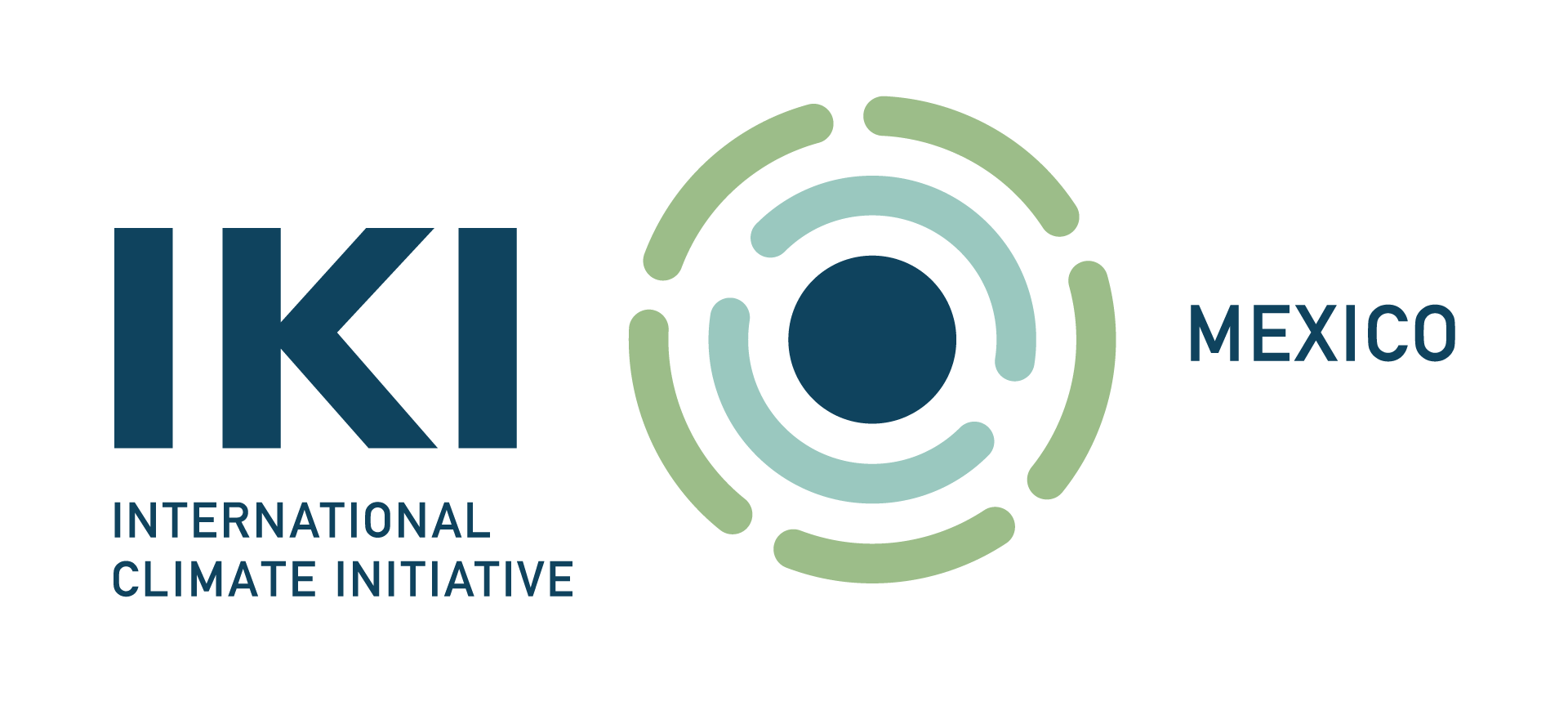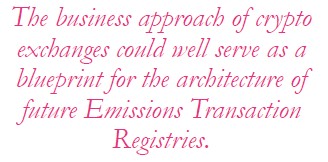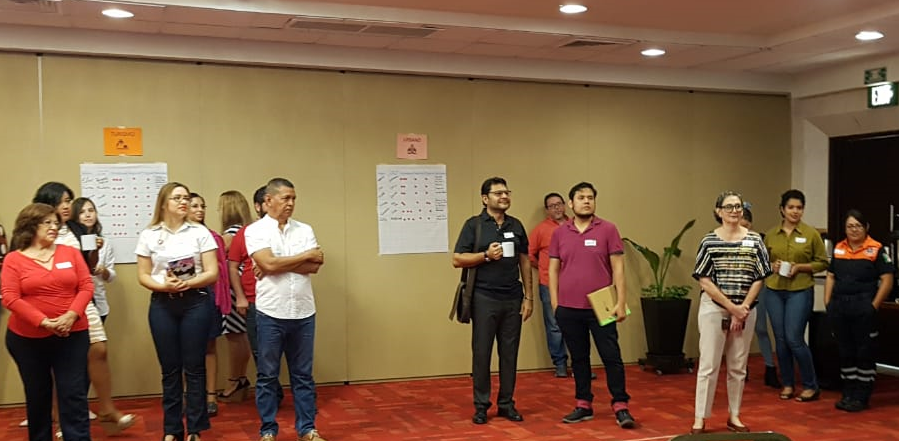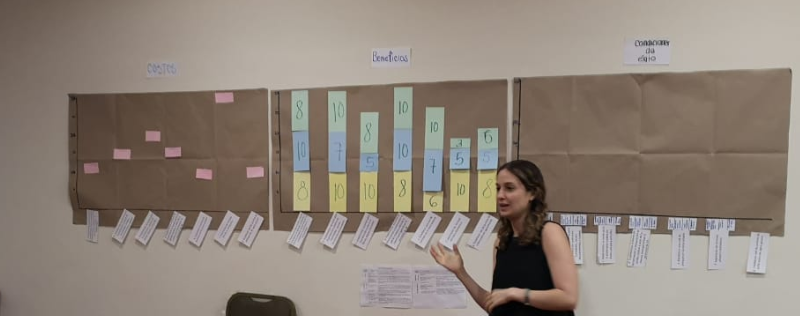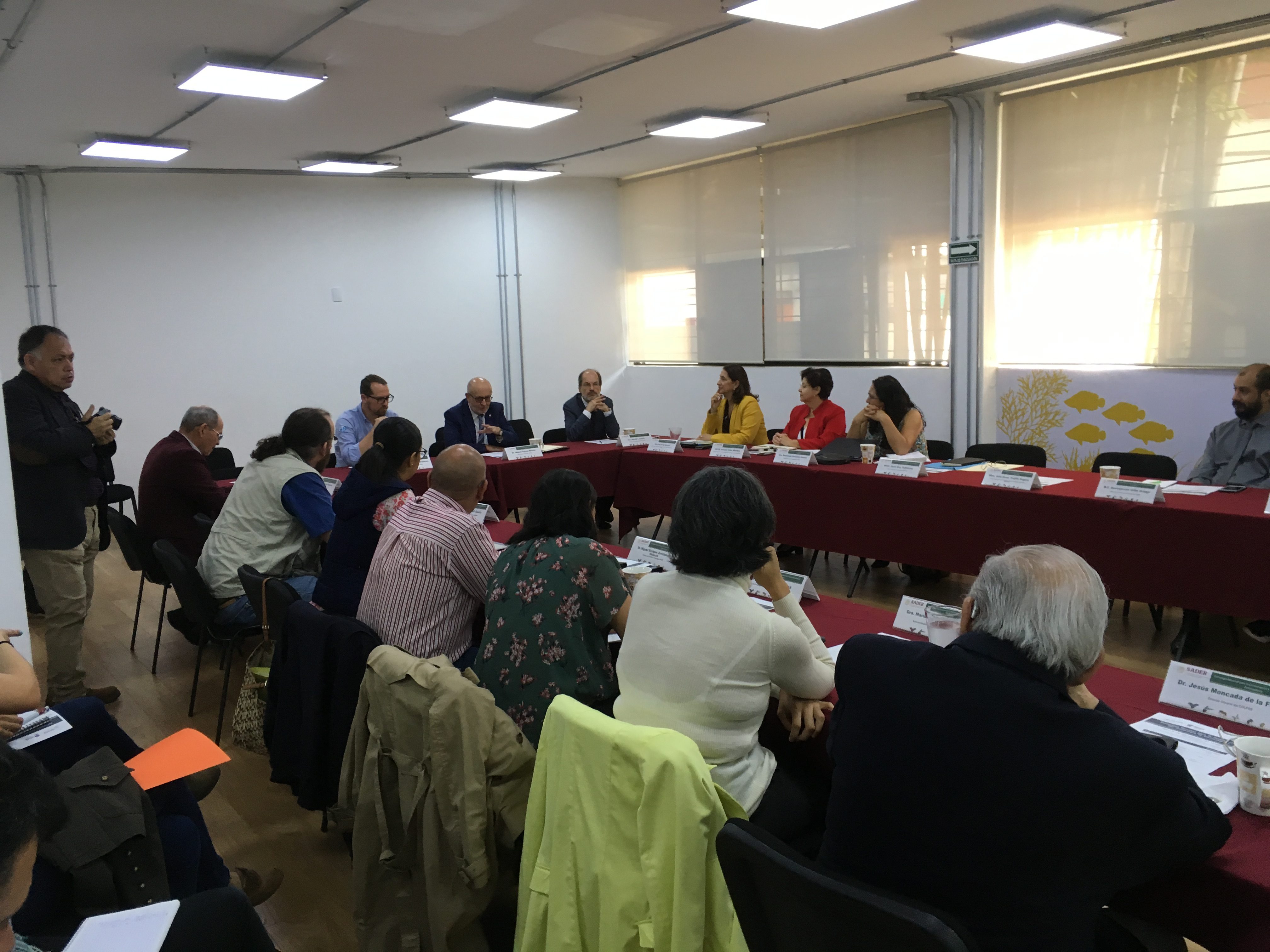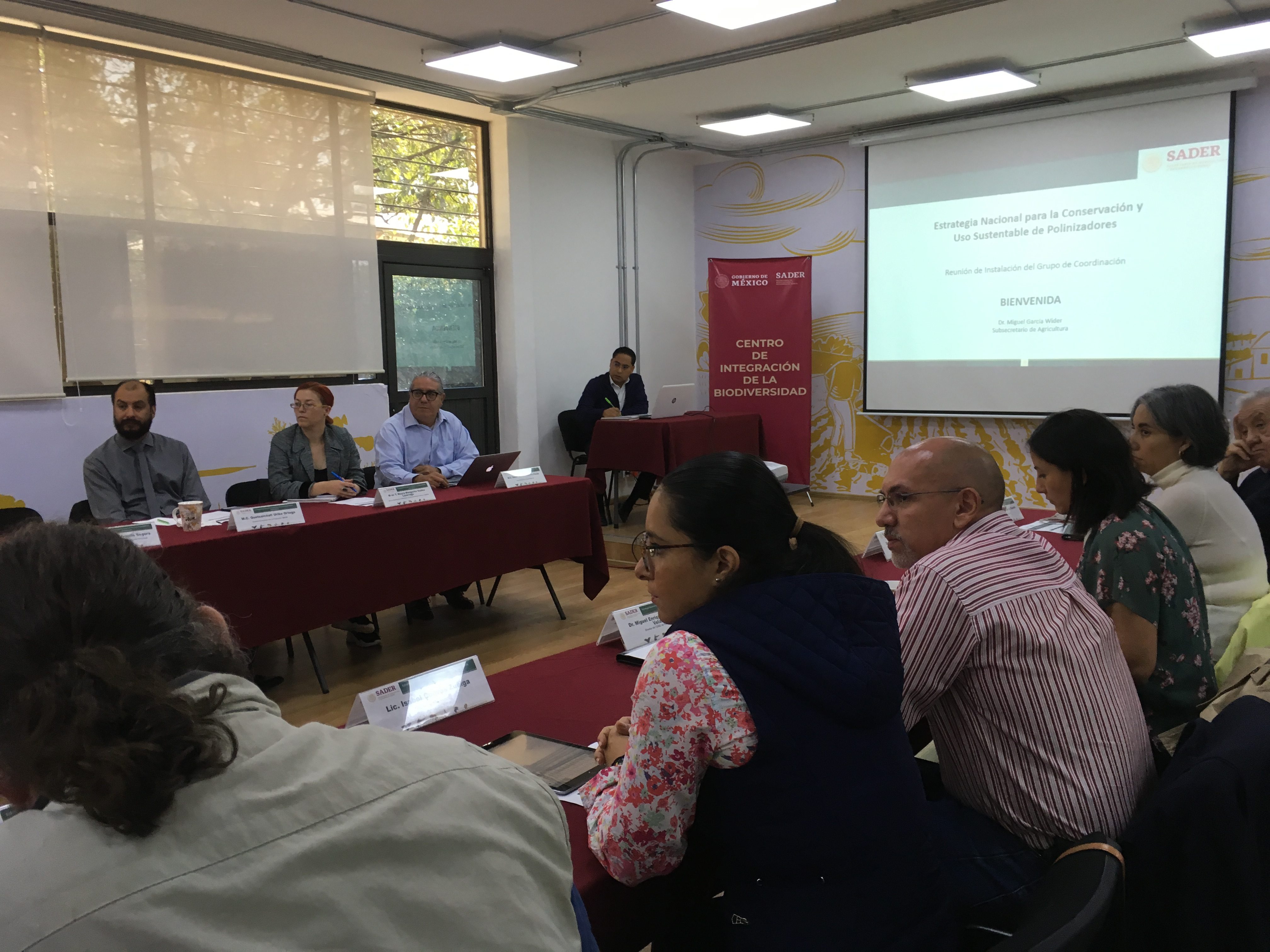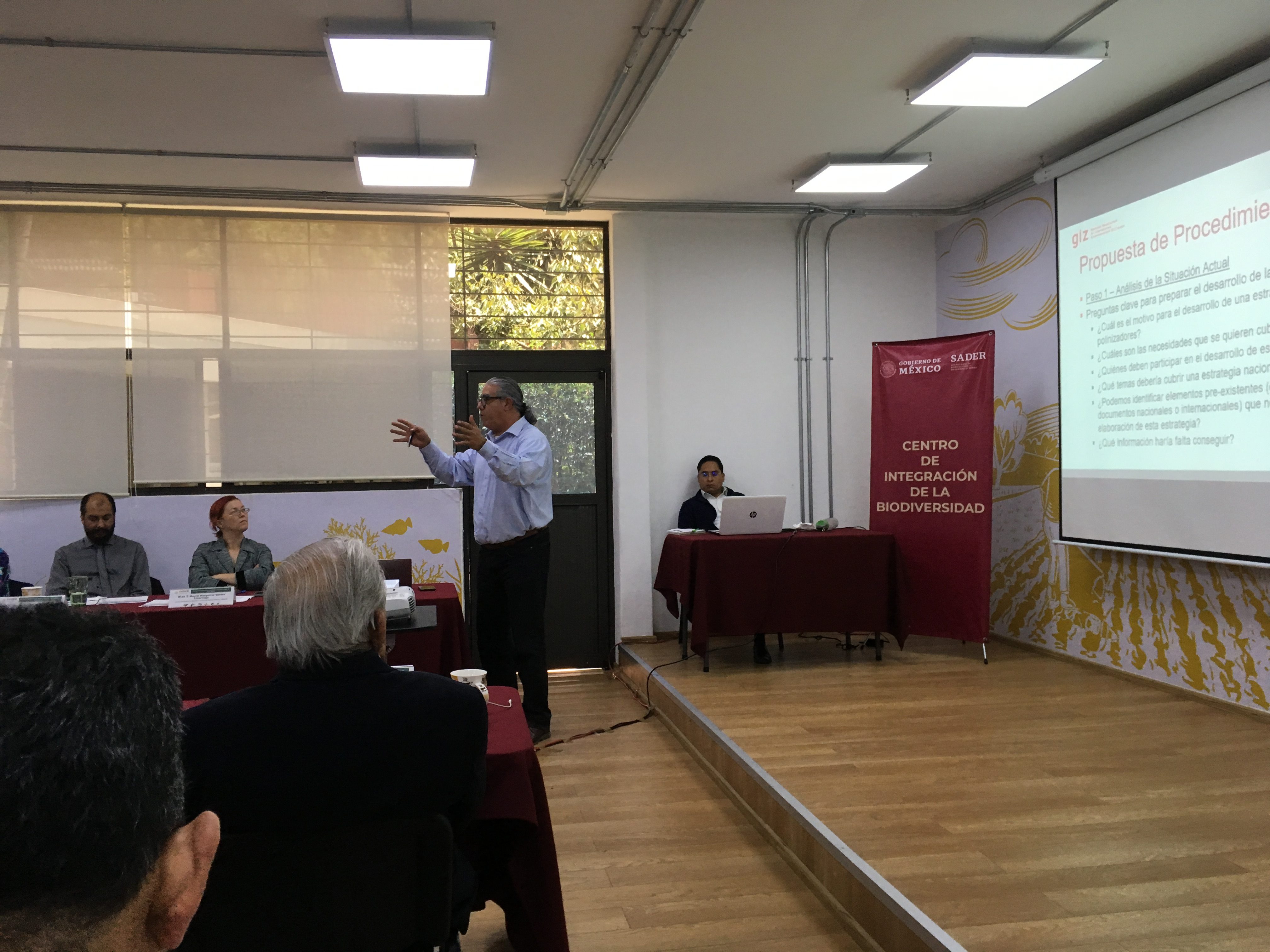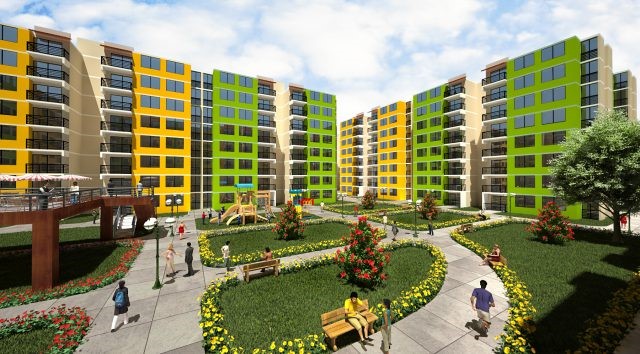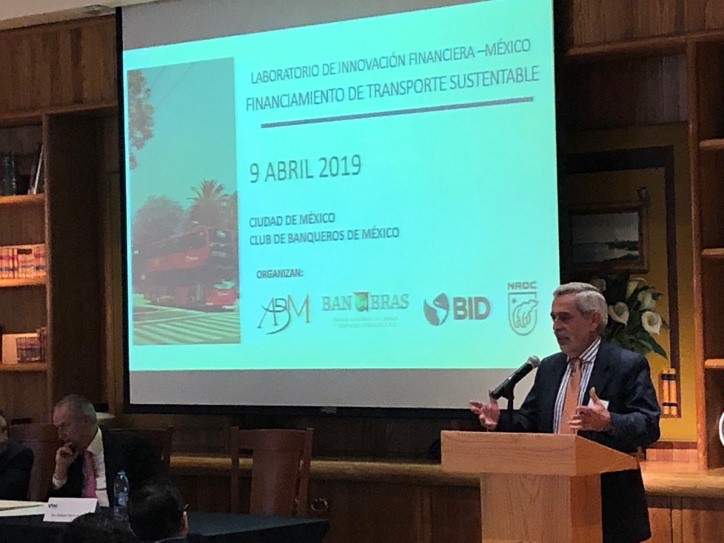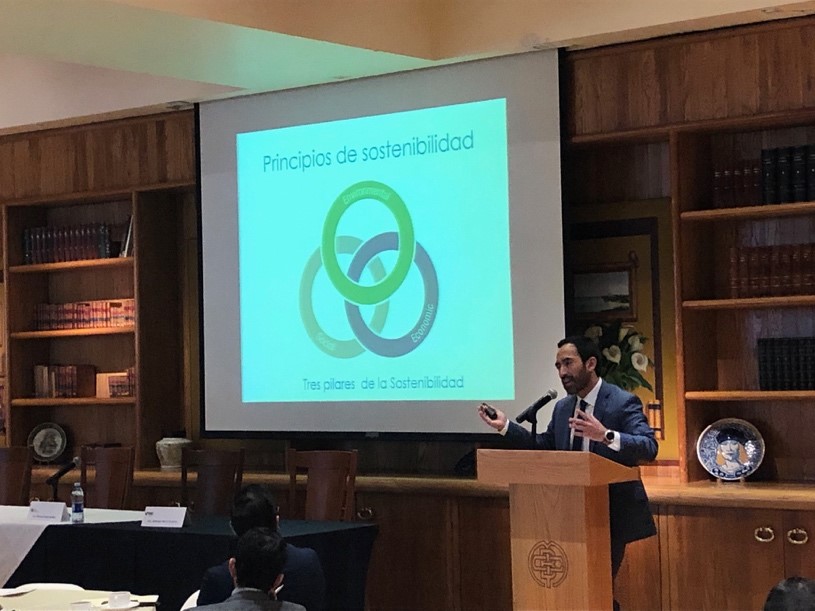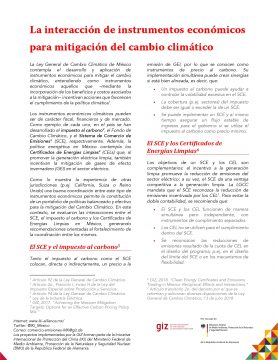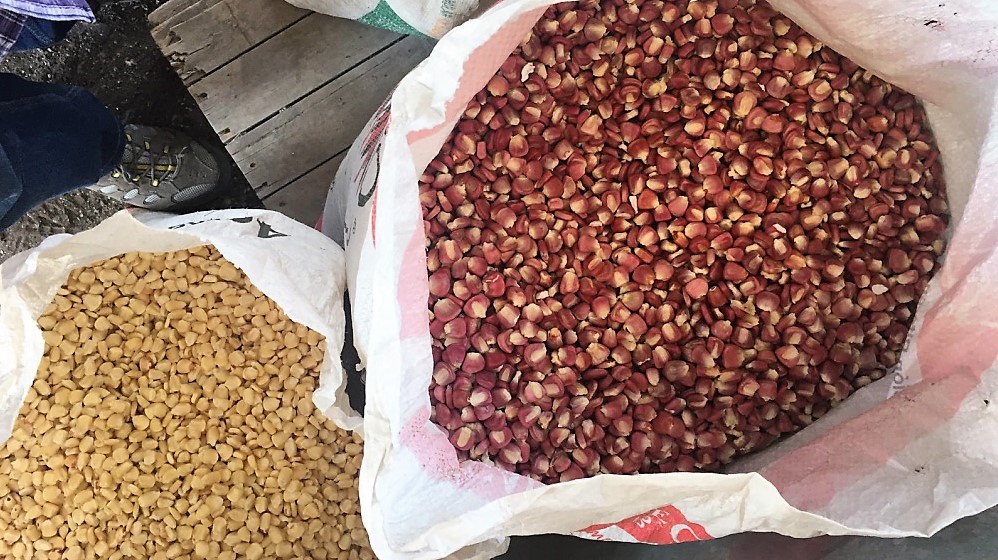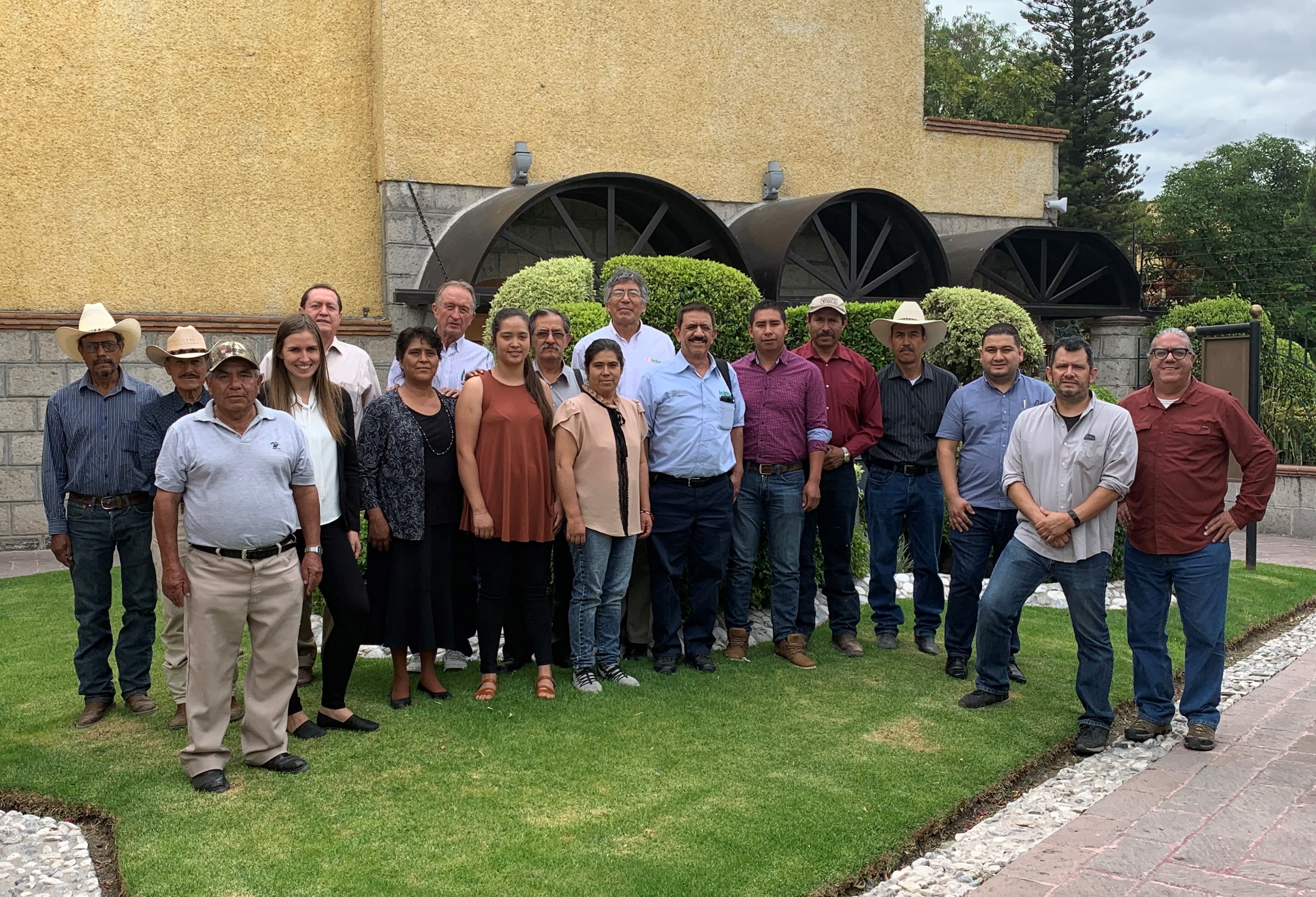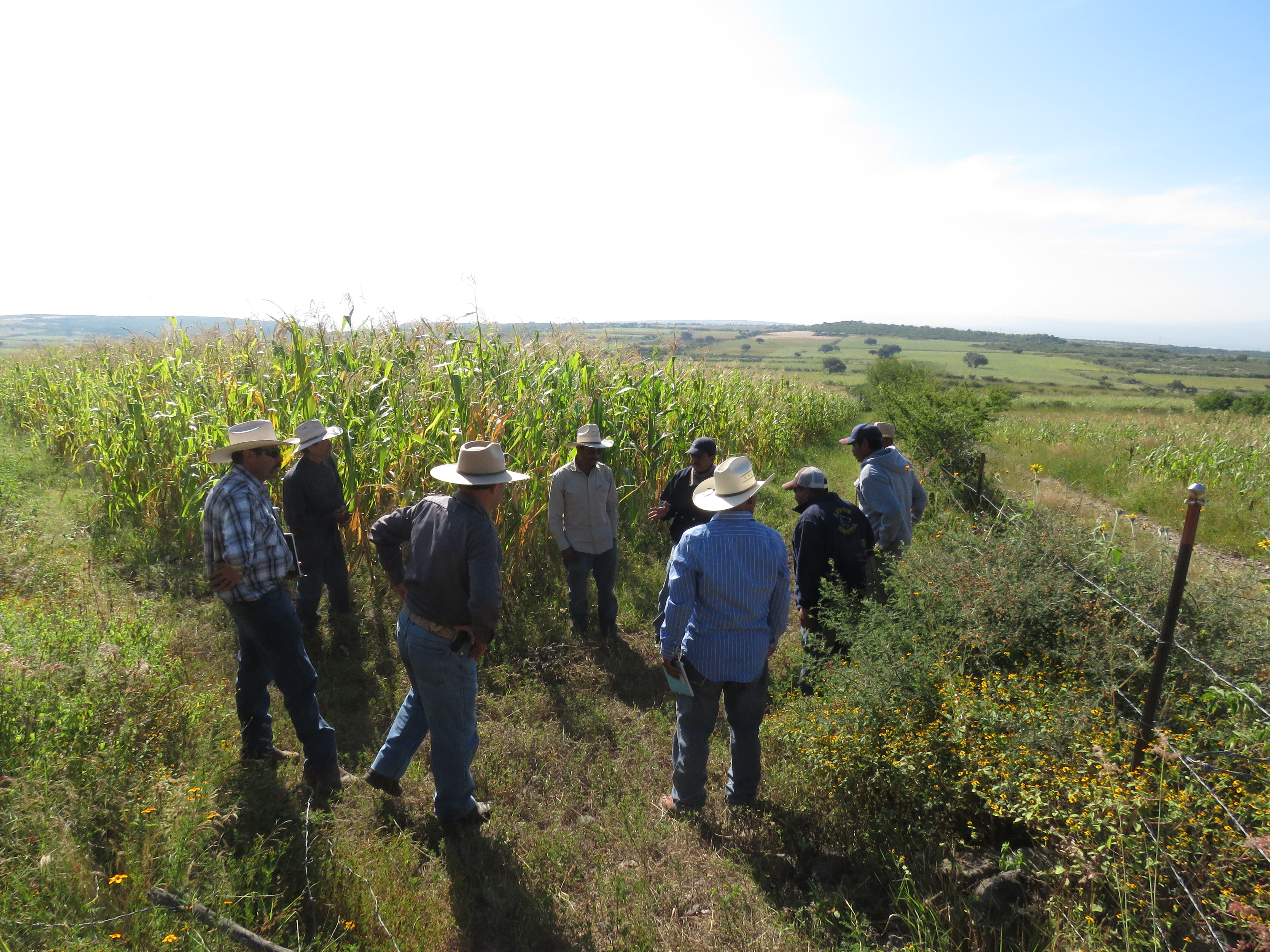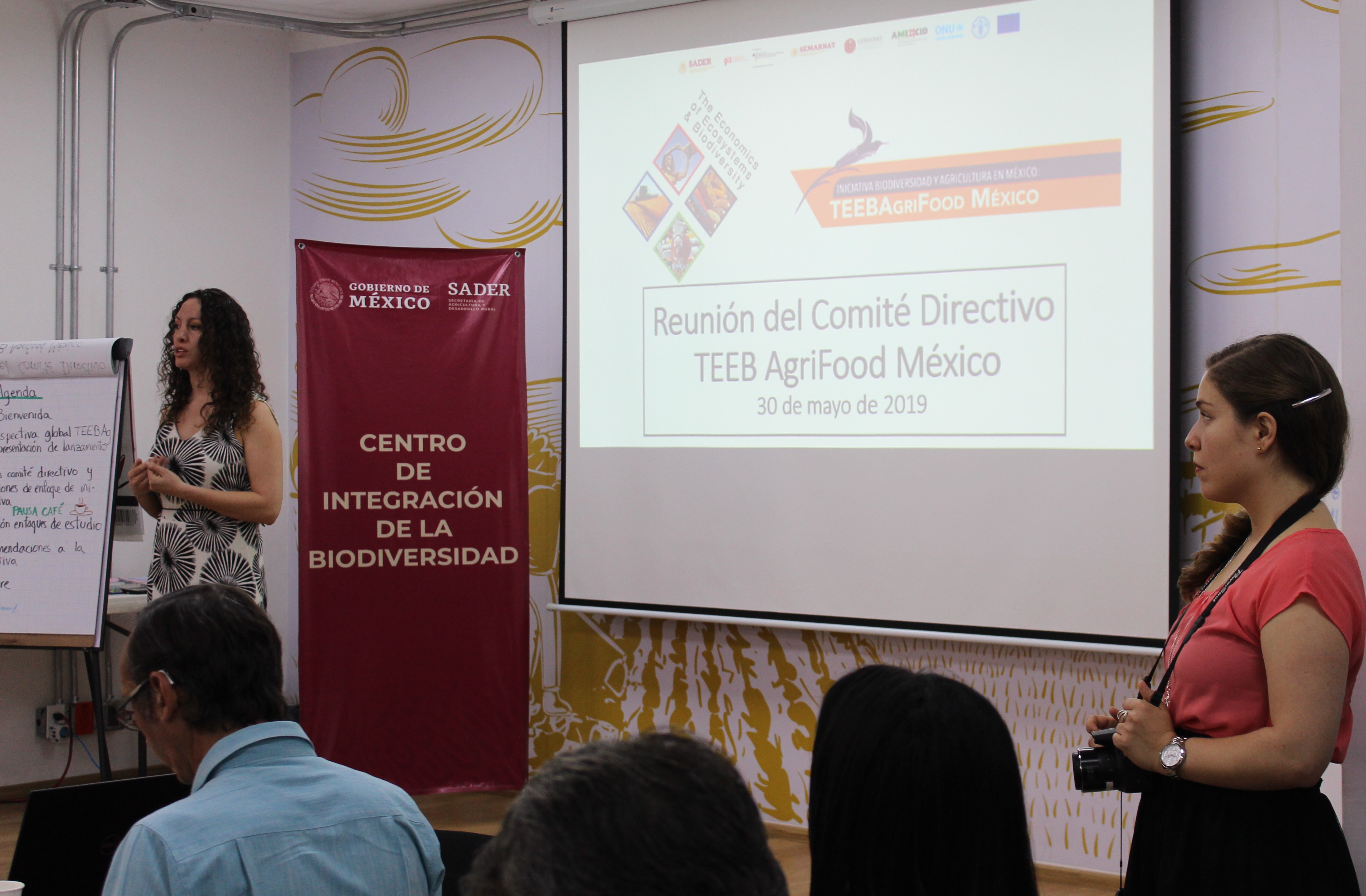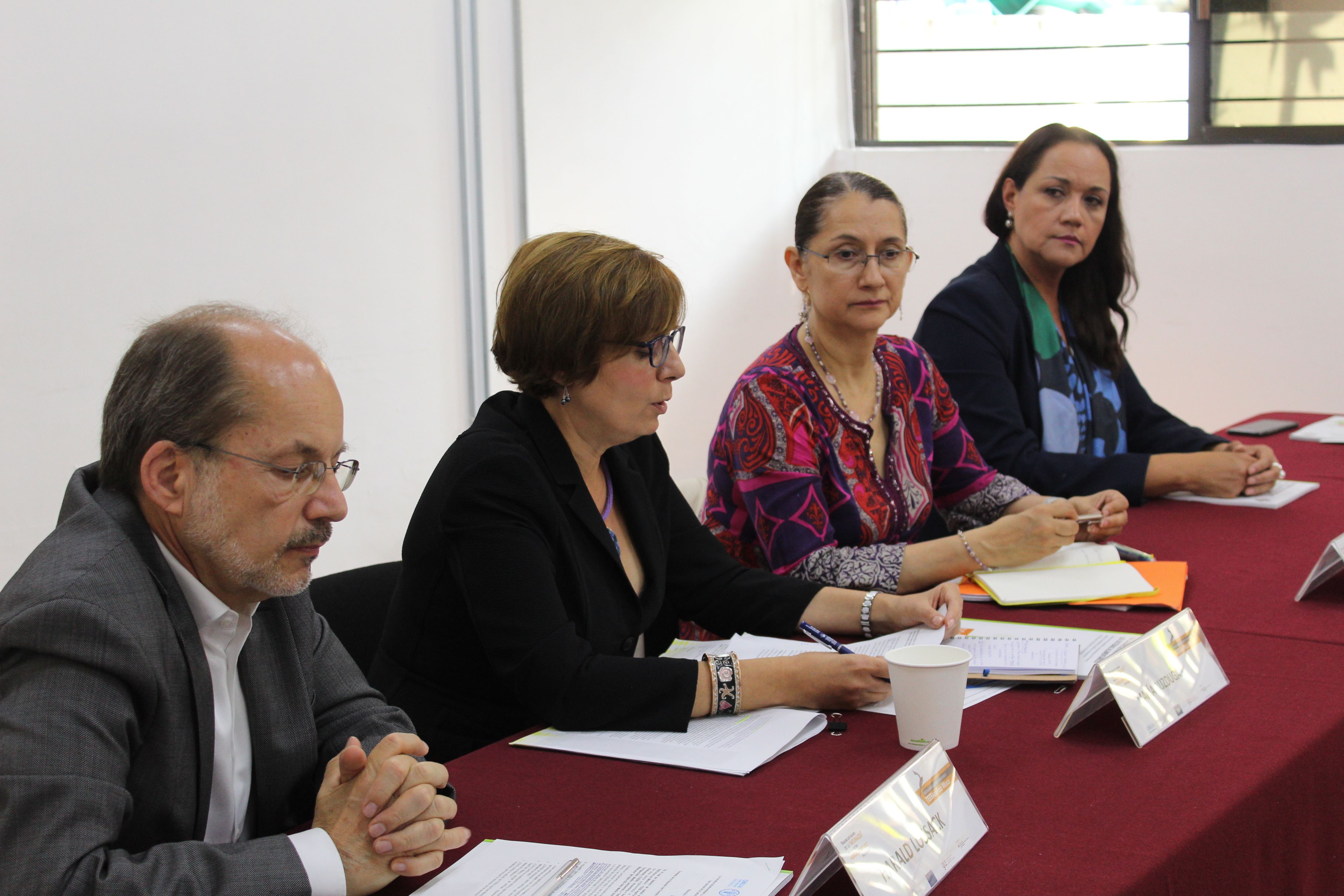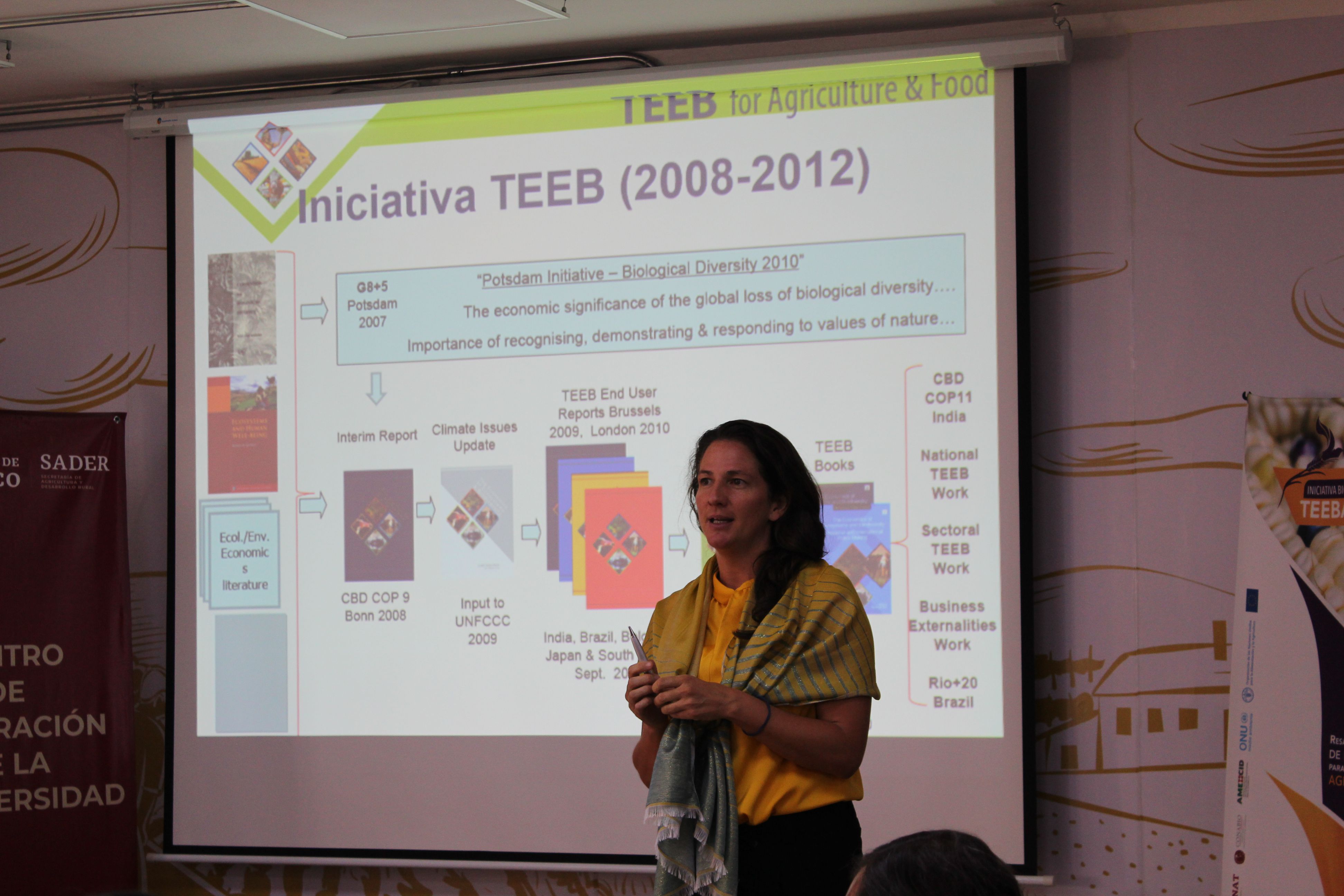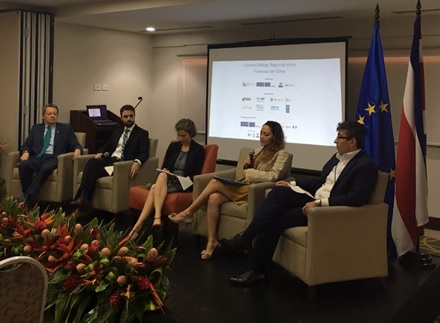The promotion of a global economy that takes into account natural environment preservation, biodiversity protection, sustainable management of resources and climate change mitigation and adaptation actions is one of the main challenges to be met in the future. This challenge requires the inclusion of all actors (public, private, corporate, individuals) and a series of policy instruments, which highlight the regulatory framework and the incentives to mobilize the necessary financial flows.
International agreements such as the Paris Agreement, the 2030 Agenda or the Sustainable Development Goals (SDGs) have highlighted the need to find ways to support, but also to finance long-term solutions to solve environmental challenges. Consequently, the exchange of information and experiences offers an opportunity to promote new instruments and innovative mechanisms for green financing through efforts aimed at producing changes in common financial practices.
In conceptual terms, there is a debate about how to define finance according to its applicability in the environmental sector. In this regard, the following definitions stand out:
- Green Finance: According to information from the Deutsche Gesellschaft für Internationale Zusammenarbeit (GIZ) GmbH (German Cooperation for Sustainable Development), green finance is understood as the financing of investments that provide broad environmental benefits, such as reductions in greenhouse gas (GHG) emissions, reductions in water, air and land pollution, greater biodiversity or greater climate resilience. Green financing includes environmental financing, conservation financing for and climate financing.
- Sustainable finance: The European Commission (EC) defines it as financing of investments that take into account environmental, social and governance considerations. It also includes a strong green financing component that aims to support economic growth while reducing pressures on the environment, reducing GHG emissions, combating pollution, promoting awareness and transparency about the risks they may have in the financial system.
- Climate finance: According to the United Nations Framework Convention on Climate Change (UNFCCC), it is the financing that aims to reduce emissions and improve the sinks of greenhouse gases, in addition to reduce human and ecological systems vulnerability, maintenance, and increased resistance to climate change negative impacts.
- Conservation Finance: Blue Solutions defines it as a mechanism through which a financial investment is made in an ecosystem, directly or indirectly through an intermediary that aims to conserve the values of the ecosystem in the long term.

There is a variety of concepts and approaches to assess “financing”, even among development banks, international cooperation agencies and governments. Based on the above, the definition provided is based on the methodology and mapping used for its implementation.
International Context
Since the signing of the Paris Agreement in 2015, the need to identify and channel resources with the aim of keeping the global average temperature rise below 2 degrees Celsius, and as close as possible to 1.5 °C, has increased. Regarding financing, article two of the Agreement indicates the need to make financial flows compatible in order to move towards a development that is resilient to climate and low in GHG emissions. Under the principle of common but differentiated responsibilities, the document recognizes the leadership role that developed nations should have regarding the transfer of financial resources to developing countries in order to help them achieve their mitigation and adaptation commitments. However, the ninth article invites all countries to develop the capacity to do so.
With regard to biodiversity, the main objectives of the Convention on Biological Diversity (CBD) are the conservation of biological diversity, the sustainable use of its components and the fair and equitable sharing of the benefits derived from the use of genetic resources. Regarding financing, a recognition of the value of biodiversity is essential and allows the mobilization of financing from multilateral, national and innovative sources. The Global Environment Facility (GEF) is one of the most important financial mechanisms at global level administered by the World Bank.
There have been several mechanisms to channel resources, including the Special Climate Change Fund (SCCF), the Adaptation Fund (AF) and the Least Developed Countries Fund (LDCF). At the end of 2011, the Green Climate Fund (GCF) was established, with the purpose of assisting the efforts of developing nations to respond to climate change. According to data from the GCF, as of January 2019, an equivalent of 10.3 billion dollars has been collected in commitments from 48 countries, regions and cities.
In addition to international funds, there is a Permanent Funding Committee, which is a specialized technical team that supports the UNFCCC in providing assistance to the Parties (understood as the State that has consented to be bound by the treaty’s guidelines) for a correct use of resources. Since its creation, it has focused on improving the coordination strategies of the different financing mechanisms available, with the purpose of rationalizing and mobilizing resources efficiently, as well as promoting the monitoring, reporting and verification of the support provided.
In this sense, since 2008, the German government has supported the implementation of projects for the fulfillment of the NDC and the National Strategy on Biodiversity of Mexico (ENBioMex) through the International Climate Initiative (IKI) of the Federal Ministry for the Environment, Nature Conservation, and Nuclear Safety (BMU) of Germany. Based on the foregoing, 18 bilateral projects have been implemented with an amount of 69.5 million euros; eight regional projects and 44 global projects.
According to the information of the Mexican Commission for the Knowledge and Use of Biodiversity (CONABIO), the mobilization of resources by the GEF to Mexico in the 2015-2018 period was for the amount of US $ 88.1 million. On the other hand, international resources for climate change in Mexico, during the 2014-2018 period, around $61,165,646,524 pesos were received from multilateral and bilateral public sources, which were distributed in 75 projects. There are also 12 other global projects in which Mexico participates together with several countries (such as Argentina, Brazil, Colombia, Honduras, Guatemala, Costa Rica, Peru, China, India, Indonesia, among others) and that amount to a total of $ 7,142,604 pesos. Likewise, 23 projects were identified whose implementation is expected to be carried out until the year 2021. Adding everything gives a projected amount of $ 32,935,768,463 pesos.
As shown in Figure 1, 53 % of financing in the 2014-2018 period comes mainly from the Inter-American Development Bank (IDB), followed by KfW as implementer (31%), AFD/KfW (7%) and the World Bank (5%).
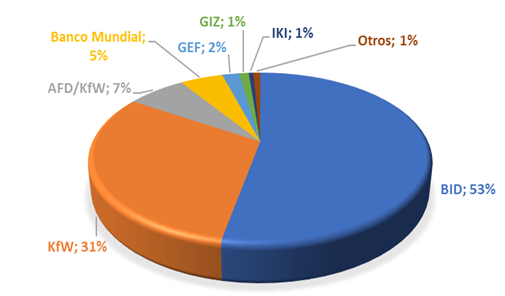
As shown in Figure 2, the sectors that receive most support are energy (45%), housing, and environment sector. It is noticeable that the energy sector is the second most important emitter of greenhouse gases (GHG). However, it is important to continue encouraging the reduction of emissions in sectors such as transport and industry.

It is worth noticing that the main source of financing for climate change projects comes from the Multilateral Development Bank, which, although initially focused on offering technical and economic support at government level for issues of sustainable development and fight against poverty, now it has a greater role in providing financing to the private sector, as well as in leveraging resources from it.
According to the study “Diagnosis on multi-stakeholder coordination on Climate Finance“, Mexico is positioned as the second largest recipient of international resources for climate finance in Latin America, with a total of 686 million dollars approved between 2003 and 2017. This means that strengthening the capacity for management, allocation, use and transparency of resources obtained from international sources in Mexico would help to leverage greater resources from public and private sources to comply with their NDC.
National Context
In Mexico, the states have joined efforts in the development of a national policy on climate change and promotion of biodiversity, through the strengthening of their institutional capacities and the elaboration of a legal framework that allows the execution of public policies for the mitigation or adaptation. The General Law on Climate Change (LGCC), published in 2012, establishes a regulatory and national policy framework to address the causes and face the adverse effects of climate change, through the development and implementation of adaptation and mitigation measures and actions. The ENBioMex establishes the bases to promote, coordinate and harmonize government and society’s efforts for the conservation, sustainable use and fair sharing of the benefits derived from the use of the components of biological diversity and their integration in the sectoral priorities of the country.
The LGCC contains a variety of economic and financial mechanisms that stimulate the channeling of resources for the development of actions, projects and mitigation and adaptation programs in the public, social and private sectors. Funding in this area is mainly carried out in three ways: through the Climate Change Fund (CCF); through budget allocation reflected in Branch 16 of the Budget of Expenditures of the Federation (PEF) and the Transversal Annex 16.
- Climate Change Fund (CCF)
The CCF aims to capture and channel national, international, public and private financial resources to finance actions against climate change. The Fund has as trustor the Ministry of Finance and Public Credit (SHCP), Nacional Financiera (NAFIN) as fiduciary and the Ministry of Environment and Natural Resources (SEMARNAT) as responsible and Technical Secretariat.
The Fund receives resources directly from the PEF and from other public funds, like contributions on payment of rights and uses according to the corresponding laws; donations from individuals or corporations; national or international, as well as contributions from governments of other countries and international organizations.
- Branch 16 of the Budget of Expenditures of the Federation (PEF)
It is a legal and financial document that determines the expenditures made by the federal government from January 1 to December 31 of each year. Within the 16th Branch, for the year 2019, in terms of Environment and Natural Resources, resources are allocated to protect the flora and fauna, as well as the biological diversity of the country, also, various mechanisms of research, technological development and capacities to cope with climate change are considered.
- Transversal Annex of Climate Change (AT16)
As part of the reforms for the restructuring and orientation of the budget, the PEF has integrated different cross-sectional budgets in order to identify and categorize the proportion of resources allocated to works, actions and services linked to a specific purpose; in this case, mitigation and adaptation to climate change. This is to expand or improve, in the short and medium term, public policies focused on guaranteeing the right to a healthy environment, as well as contributing to the monitoring and compliance with state, national and international commitments on climate change.
Resources are contemplated to: Secretariat of the Interior (SEGOB), Ministry of Agriculture and Rural Development (SADER), Ministry of Communications and Transportation (SCT), Ministry of Economy (SE), Ministry of Public Education (SEP), Ministry of Health (SSA), Ministry of the Navy (SEMAR), Ministry of Agrarian, Territorial and Urban Development (SEDATU), Ministry of Environment and Natural Resources (SEMARNAT), Ministry of Energy (SENER), Ministry of Tourism (SECTUR) and National Council on Science and Technology (CONACYT). It also considers state productive enterprises: Mexican Petroleum (PEMEX) and Federal Electricity Commission (CFE).
Financing in the area of Climate Change and Biodiversity in Mexico
According to the information presented during the dialogue “Perspectives on climate finance in Mexico 2018-2024“, since the CCF was created in Mexico, $ 183,012,375.32 pesos have been mobilized for 22 projects. The transversal informative Annex 16 of the PEF, in the last four years (2015-2018), has allocated $ 188 billion pesos. From green bonds, public entities have issued $ 3,714 million dollars; while the commercial bank 657 million dollars. Taking into account the tracking of the previous points, a mobilization of financing of $ 7,725 million dollars from 2014 to 2018 is estimated, which would represent approximately 6% of the goal of $ 126,000 million dollars that the implementation of Mexico’s NDCs would cost in terms of mitigation.
According to data obtained from BIOFIN, the estimation of the financial needs for biodiversity is around USD 461.9 million per year during the period 2017-2020, which represents a 46.7% increase in biodiversity spending, based on the exercise during 2015. The evaluation of financial needs includes: 1) Natural Protected Areas with an amount of 60 million per year estimated by the National Commission of Natural Protected Areas (CONANP); 2) Financing needs to cover the demand for Payments for Environmental Services (PES) estimated at USD 202.1 million by the National Forestry Commission (CONAFOR); 3) The financial needs of the ENBioMex and Plan of Action 2016-2030 are estimated at USD 191.4 million.
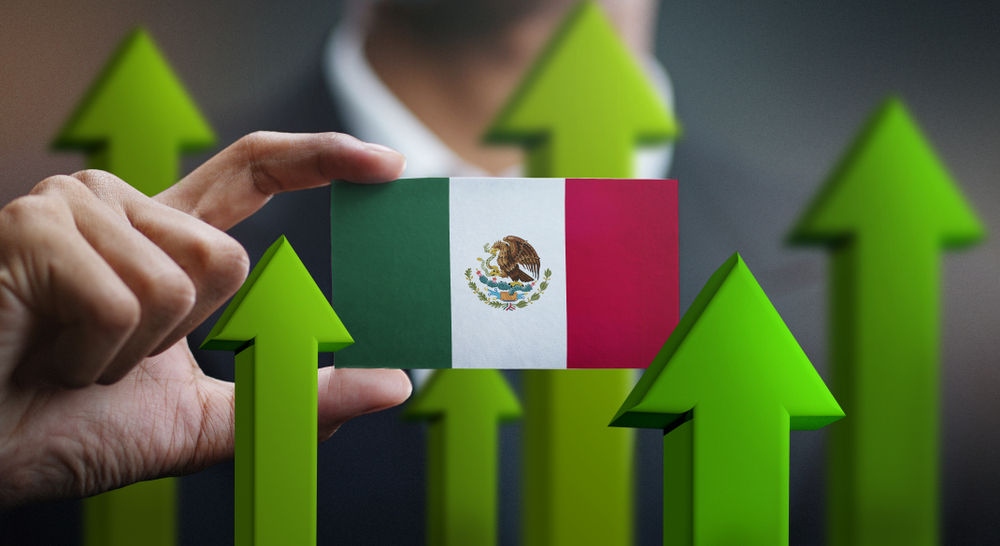
The Role of the Private Sector
There are several financing sources that come from public sources. However, they are not enough before scenarios of budget reduction at federal level or limitation of indebtedness with international organizations. Nevertheless, there are private sources that can help boost resources for leveraging projects and actions against climate change, and biodiversity promotion.
Governments must provide an environment of certainty and financial confidence to ensure that private actors see a potential market in climate change projects. The conditions at national, state and local level must generate the greatest possible certainty that investments in green projects will have a low risk and will be bankable, and it is important to clearly identify their environmental and economic benefits.
Private sources of financing include a wide range of local and international banks and financial institutions, commercial banks, private funds, pension funds and other sovereign funds, insurers, mortgage banks, and micro-financial institutions, among others. The opportunities have been given mainly in GHG mitigation projects, energy efficiency, renewable energy, waste management, green infrastructure and in the agricultural sector.
At the national level, the Green Finance Advisory Board (CCFV – made up of high-level representatives of the Mexican financial sector, such as: Pension funds, Insurers, Associations, Commercial Banking, Development and Multilateral Banking, Issuers, Investment Funds, etc.), has promoted the dialogue among different market players on how to encourage financing of green projects, influence market practices and mandates and/or investment regulations, in such a way that they contribute to the establishment of incentives to stimulate the development of the green finance market.
The CCFV launched the “green bonds principles MX“, with the purpose of establishing guidelines that help green bond issuers in the Mexican market in their bond issuance process; and at the same time, give certainty to investors about the benefits of financing of green projects. According to the information of the Advisory Council on Climate Finance (previous name of the CCFV), a “green project” generates clear and specific environmental benefits, which must be described in detail, and, whenever possible, the emitter must be able to quantify them.
After recognizing the negative implications of climate risks on private investment, the private sector and financial organizations have implemented different initiatives to move from carbon intensive projects to sustainable projects and programs. As an example, we can mention the activities of the Banks of Mexico Association (ABM) and the Mexican Stock Exchange (BMV).
The ABM decided to demonstrate its leadership in improving the financial system in matters of sustainability and climate change, through the Sustainability Protocol of the Banks of Mexico. The document recommends a management framework and guidelines on sustainability for Mexican banks.
On the other hand, the BMV generated a sustainability index (CPI-Sustainable), to encourage Mexican emitters to implement sustainable policies and systems. In addition, BMV signed the Sustainable Stock Exchanges Initiative, to improve accountability and transparency, after which the Sustainability Guide for Emitters was launched to support companies in the implementation of sustainability strategies and disclosure of sustainability programs in the field.
Challenges in Financing Matters
One of the main obstacles in the matter consists of limited information on the existence of financial mechanisms and how their resources are applied to certain projects. A mapping of the different sources of financing available in the country for the public sector could be very useful in this regard. In addition, an information system on the projects implemented on climate change and biodiversity would help to coordinate the different existing sources to meet the goals set at the national level.
Likewise, a coordination mechanism with multi-sectoral and multi-level vision could allow the articulation of climate change actions in all sectors of the economy, including the public, private, financial, social and academic sectors. Another option would be to facilitate access to climate finance and training for small and medium enterprises.
There must be a strategy to encourage and guide the financial sector to develop actions on climate change and biodiversity and improve the knowledge of public and private financial institutions on the regulations and operation of the institutional framework of both areas. In addition to the above, the projects that can be bankable in the short, medium and long term should be identified.
Knowledge of the costs and risks associated with investments must be promoted, so that the financing is granted to projects with environmental and social benefits. Based on the above, a mapping of the existing financial mechanisms and their functioning should be carried out, so that biodiversity and climate change issues can be considered as important investment themes. Subsequently, indicators of the impact and results of the financed projects have to be created to know the effectiveness of the funds assigned to them.
Through a taxonomy on what climate or green financing means, channeling of resources to projects that have sustainable characteristics or benefit the environment could be facilitated. To do this, it will be vital to work within the framework of the Planning Law to integrate all the concepts that are key to identify such actions.
The IKI in Mexico in terms of financing
In order to support climate action and biodiversity protection, IKI projects in Mexico are working in the field of financing. So far, the IKI has encouraged cooperation with financial institutions to integrate environmental and social indicators in the decisions of loans and investments, development of financial products and risk management. In this sense, the IKI of the Federal Ministry for the Environment, Nature Conservation and Nuclear Safety (BMU) of Germany supports the implementation of the NDC and the ENBioMex in Mexico.
